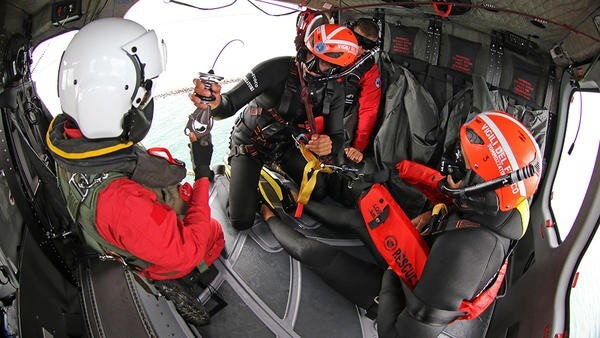Gallery: Italian National Fire Corps

Italian Fire Corps’ helicopters and divers undertaking exercises in the port of Ravenna, Emilia-Romagna
The Department of firefighters, public rescue and civil defense (Dipartimento dei Vigili del Fuoco, del Soccorso Pubblico e della Difesa Civile) is composed by eight central directorates, eighteen regional offices and 103 provincial commands, with around eight hundred stations throughout the country. National Fire and Rescue Service is part of the Department that depends on the Ministry of the Interiors.
The National Fire and Rescue Service (Corpo Nazionale dei Vigili del Fuoco - CNVVF) has the duty to carry out urgent technical rescues, even in events in which dangerous substances are involved, and to carry out fire prevention services. It operates all over Italy, except Valle d'Aosta region, Bolzano and Trento provinces, with around 35,000 professional and volunteer units.
The National Fire and Rescue Service is the key part of the civil protection system. The Rescue Service also carries out rescue services abroad, within the framework of international agreements on people rescue in case of emergencies.
The CNVVF has its own radio network, which is used in the emergencies services and during disasters, and an independently owned and operated information system, which is also used to improve the management of rescue operations in civil protection activities.
The CNVVF, initially fragmented in various municipal bodies, was established as such by the Royal Decree of 27 February 1939, later converted into Law 1570 of December 27, 1941, and was initially called ‘to protect the personal safety and the salvation of things, by preventing and extinguishing fires and the provision of technical services in general, including those related to air defense’.
The course to become a National Fire Corps Diver lasts about five months, with the final stage based around the helicopter tasks. Every year in the summer, the trainers and the students at the Diver School meet on the breakwater of the port of Ravenna (Adriatic Sea) to undertake exercises using the Leonardo AW139 helicopter from the Nucleo Elicotteri Bologna (Bologna Air Section)

October 2022
Issue
Aerial firefighting and SAR after 9/11; innovative use of stroke scanners by the RFDS; European nations’ response to this summer’s intense wildfire season; and the ongoing evolution of night vision systems, all in the latest issue. Plus, the USHST and EASA share regulatory updates on safety measures for operators, and the European Rescue Swimmers’ Association tells us what’s coming up at their next event
Editorial Team
The AirMed&Rescue Editorial Team works on the website to ensure timely and relevant news is online every day. With extensive experience and in-depth knowledge of the air medical and air rescue industries, the team is ready to respond to breaking industry news and investigate topics of interest to our readers.











